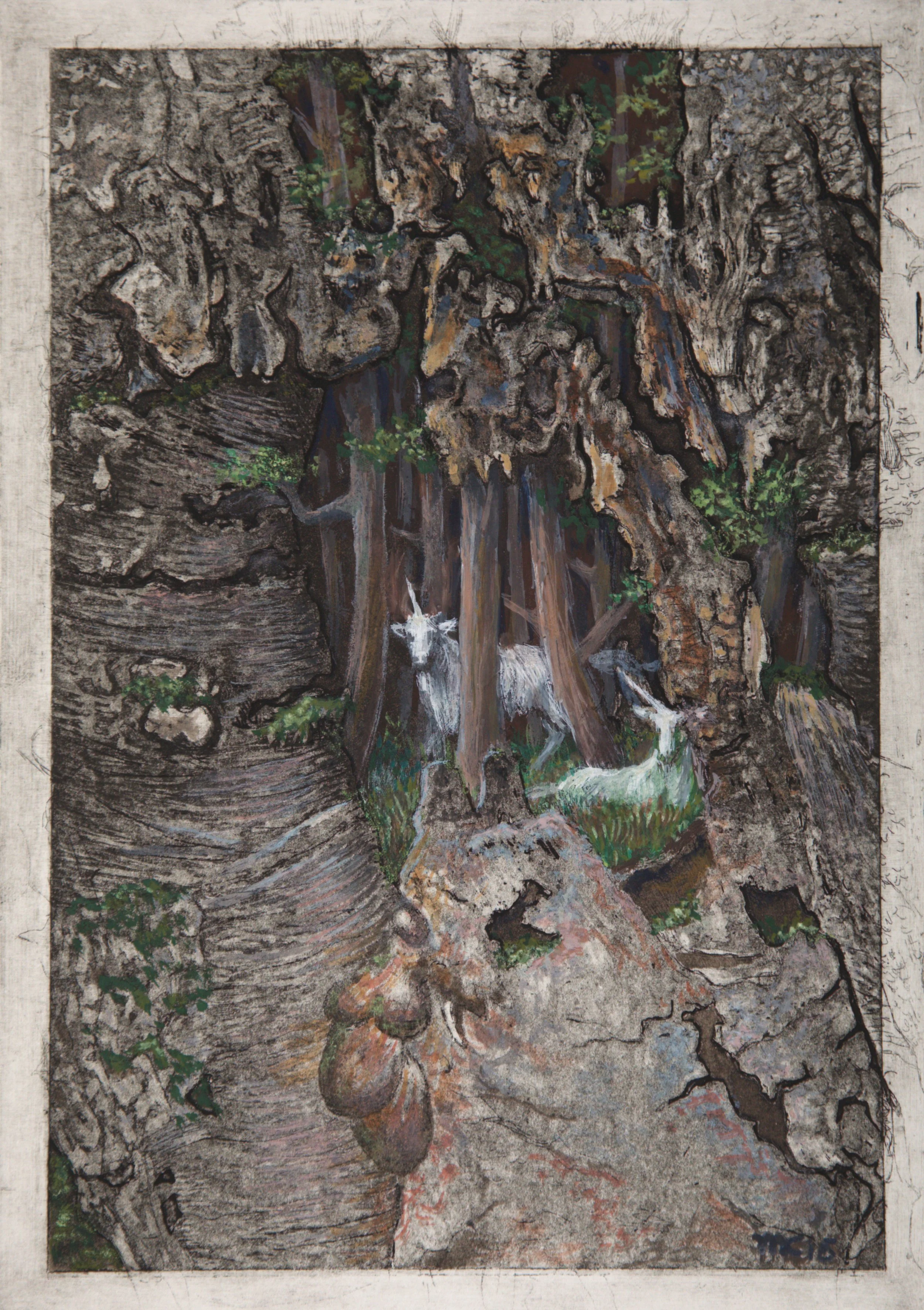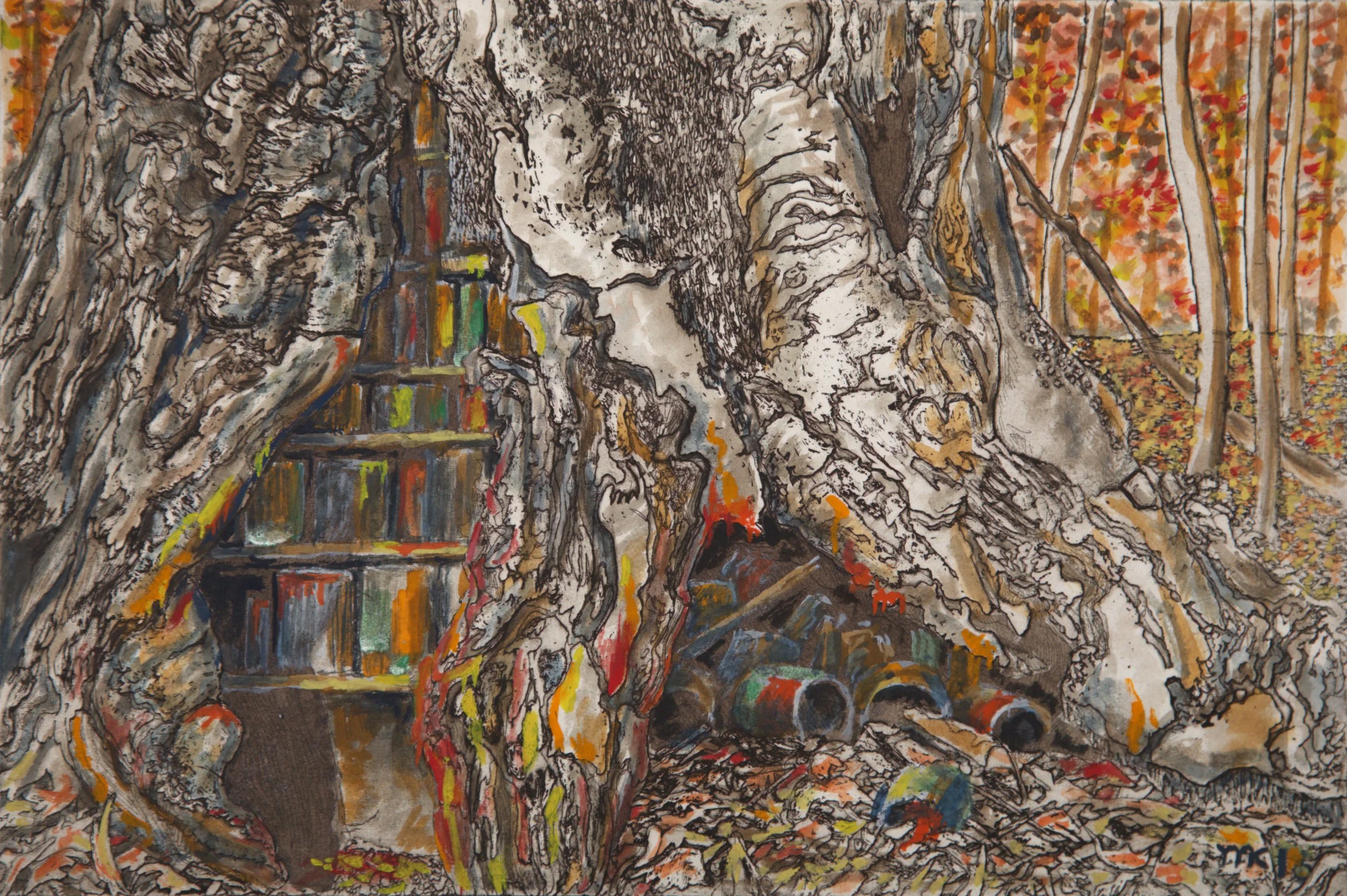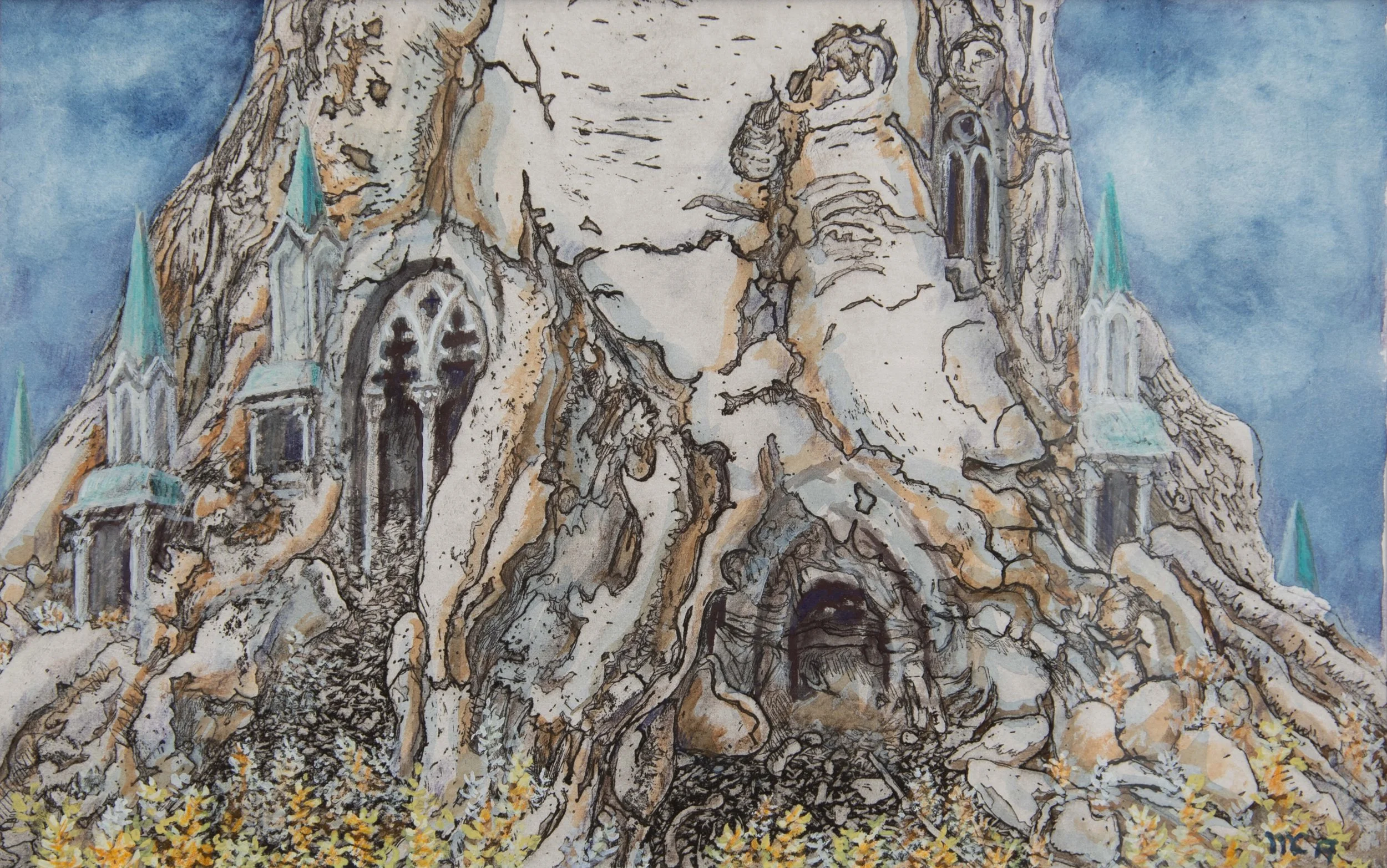In 1990 I was a bit bored to make etchings and then print always an edition of at least 12 exemplars and then keeping them in the basement. When I saw a colleague painting over his prints to make them individual originals, I thought that was a good idea. With the print you had already a ground structure from which you could develop your ideas and work further. As additional color I chose gouache, which can be thinned like aquarelle, when you will beware the structure, and can like tempera also cover the ground, when you want to add new objects.
I began with copies of Dürer’s Paumgartner Altar (Florenz) and his Adoration painting (Munich), but let the figures out, that the etchings could work like an architectural stage, I could fill with my own arrangements. Then I worked in the same technique with sketches from Tuscany. The olive trees of San Antimo, an old palace portal, old hole appartements in a rocky slope, all became the background for new stories. The biggest series I made with the Stairs series. The stairs belonged to a hidden partisan nest from WWII in Umbria and it was very entertaining to let things appear above or crawl downstairs.
When I came to America and began to paint and etch landscapes, I used the same overpainting technique from 2015 on with old trees, tree trunks and tree holes, telling stories about the hidden life in Seminary Woods, where I went daily with my dog. Trunks grew to fortresses and some small limestone formation to big rocky landscapes. Tree holes became the entrance to hidden architectures and cultures.
The good thing is that you can use the etching plates again and again, when you want, and have with the time a certain amount of ground themes you can choose from.



























































































